- Home
- Paul Christopher
The Sword of the Templars t-1 Page 14
The Sword of the Templars t-1 Read online
Page 14
“You were right,” he said to Peggy. “It was a waste of time. There’s nothing here.”
“Look,” she answered, pointing.
Holliday followed her pointing hand. A short, somewhat stooped man was approaching them from the direction of the stand of bushy walnut trees. He was carrying a wicker basket and wore the distinctive white habit and black scapular apron of a Cistercian monk: the order founded by St. Alberic of Cоteaux, the spiritual father of the Knights Templar and the author of De laudibus novae militiae, the text embedded with the coded message of the Templar sword.
17
They walked out of the ruined oratory and met the monk as he came across the open field. From the white hair peeping out from beneath his wide straw sun hat, his spectacles, and his wrinkled face, the monk looked to be in his mid-seventies, but still too young to have been anything more than a very small child when Lutz Kellerman gave his destructive order.
When he spoke the monk’s voice was soft and evenly modulated. The basket in his hand was full of walnuts.
“Il mio nome и Fratello Timothy. Lo posso aiutare?” My name is Brother Timothy, may I help you?
“Parla inglese?” Holliday asked. His Italian was fluent, but Peggy barely knew enough phrases to order a meal.
“Yes, of course,” answered Brother Timothy. The accent was cultured and intelligent.
Holliday decided not to beat around the bush.
“This is the Villa Montesano where the Archives were destroyed in 1943?”
“Yes,” said Brother Timothy.
“By an SS officer named Lutz Kellerman?”
“He did not leave his name, Mr…?”
“Holliday. Doctor, as a matter of fact.”
Better to use whatever ammunition you had.
“Ah,” said Brother Timothy. “And your companion?”
“My name is Peggy,” she replied. “Blackstock.”
“Ah,” said Brother Timothy once again. “An interesting name. Black stockings were an article of formal dress in seventeenth-century England, rather than the more informal blue stockings worn by the masses. Perhaps that is the origin of your name.” He gestured toward the basket at his feet. “I have been gathering walnuts for some experiments I am doing regarding the use of walnut extract as a high blood pressure supplement. Perhaps you’d like to tell me what you are doing here.” It wasn’t a question.
An etymologist and a research scientist in a monk’s habit. An interesting combination. The message was clear: Brother Timothy was no country bumpkin and nobody’s fool. Holliday silently reminded himself to tread carefully.
“It’s complicated,” said Holliday, hesitating. The monk picked up his basket of walnuts.
“I’m a tired old man,” said Brother Timothy. “I should not stand about too long in the hot sun. My feet swell up like little sausages. Perhaps you’d like to join me for a cup of tea? I keep a few things in the gardener’s cottage.”
The monk led the way, and they followed.
The potting shed was a single, cozy room, windows on all sides, walls lined with shelves loaded down with stacks of terra-cotta flowerpots. The floor was made of fitted paving stones covered with a single braided-rope rug. Brother Timothy had made a little haven underneath one window with a small desk, a camp stove, a kettle, an old brown teapot, and several pottery mugs. There were a few small lemons in a little wooden bowl, a paring knife, and a glass jar full of sugar cubes. Above the kitchen things there was a shelf with several dusty books. Holliday read one of the titles: Nova genera et species plantarum by Alexander von Humboldt and Aimй Bonpland. Beside it was what appeared to be an Italian edition of George Nicholson’s Dictionary of Practical Gardening.
There were two old chairs and a padded leather ottoman. The cell-like room smelled comfortably of pinewood and baked clay. The monk busied himself making tea for a few moments then sat down in one of the chairs, gesturing for Holliday and Peggy to seat themselves, as well. Peggy perched herself on the ottoman, and Holliday took the other chair.
“We’re here about the sword,” he said slowly, watching Brother Timothy’s face for a reaction. There was none.
“Sword?” Brother Timothy replied, his expression politely curious.
“A Templar sword found by Amedeo Maiuri in the ruins of Pompeii and presented to Adolf Hitler by Il Duce, Benito Mussolini.”
Brother Timothy laughed.
“Why would a Templar sword be found in Pompeii?” the monk said. “Vesuvius erupted in 79 A.D., long before the Crusades. And why would a renowned Italian archaeologist like Amedeo Maiuri give anything at all to Mussolini and that thug Hitler? I’m afraid someone has been telling stories to you.”
“Perhaps as you are telling stories to me?” Holliday answered. “French historians say that the Templars were founded by Hugues de Payens, a knight of Champagne, but there is a great deal of evidence to show that Hugues de Payens was actually an Italian named Hugo de Paganis from Nocera dei Pagani in Campa nia, whose largest city is Naples. In a straight line the town of Nocera is about fifteen miles from Pompeii, a little farther if you travel on the coastal road, which anyone would have taken back then if they were on their way to Naples. The sword could very easily have been found in Pompeii.”
“You know something of the Templars, I see,” nodded Brother Timothy. He poured the tea. “Lemon? Sugar?”
They took both.
Holliday continued.
“I also know that the sword found by Maiuri has an inscription on it: Alberic in Pelerin fecit. Made by, or for, Alberic in Castle Pelerin, the last crusader castle of the Templars in the Holy Land. St. Alberic of Cоteaux, the founder and patron saint of the Cistercian Order. Your order, Brother Timothy.”
“You really do seem to know a great deal, Dr. Holliday,” said Brother Timothy calmly, sipping his tea.
“I also know that this sword had a coded message embedded in it and that the key to that code lay in a particular copy of De laudibus novae militiae, a letter written by-”
“A letter written by St. Alberic of Cоteaux to Hugues de Payens, or Hugo de Paganis, depending on your point of view,” completed Brother Timothy. “That particular copy having been hidden among the tens of thousands of books and papers in the Naples State Archives, which were once stored in this very place.” The elderly monk smiled pleasantly. “As the hippies used to say back in the days of my youth, Dr. Holliday, life is a wheel and what goes around indeed does come around again.”
“You know about the sword then?” Holliday asked.
“Certainly. I have known about it for many years. Sometimes it is called the Sword of Pelerin, the One True Sword, the True Sword of Pelerin. Another myth of the Crusades.”
“No myth,” said Holliday. “The sword exists, believe me.”
“How do you happen to know of the letter?” Peggy asked.
“Because of the warning on the cover of the holy letter written by St. Alberic: ‘The words within shall only be known to the holder of the True Sword of Pelerin.’ The cover is made of solid silver, the words chased in gold.”
“You’ve seen it?” Holliday asked. He felt a sudden surge of hope. If Brother Timothy had seen the copy of the letter that meant it had somehow survived the destruction of the archives.
“Yes,” replied the monk. “It makes interesting reading. An apologia from a saint on the subject of spilling blood in the name of Christ. A philosophy espoused by less saintly men, several of your American presidents in particular.”
“You would have been too young to know about the book during the war,” said Peggy, ignoring the pointed comment and voicing Holliday’s unspoken objection.
“I was nine, a foundling orphan. Our abbey, l’Abbazia di San Martino di Camaldoli, lies on the next hill, less than a kilometer from here. I watched the palazzo burn from the window in my room. It burned for a day and a night. It made Brother Albano, our abbot and the man who raised me, weep.”
“I’m not sure I understand,” said Hollid
ay. “What was the connection between your abbey and the Archives?”
“The Villa Montesano was originally the Priory of San Martino. Even after the property was sold the Abbey held stewardship of the villa’s lands. It still does, which is how I come to gather walnuts here.” The monk sipped his tea, added a slice of lemon, and then went on.
“Brother Albano was more than just the abbot. He was also the sacristan, personally in charge of the scriptorium and the library for which our abbey was well-known. Mussolini despised the Roman Catholic religion from an early age. In fact, Brother Albano had taught him as a boy in the Salesian Fathers’ boarding school in the town of Faenza.
“He worried that Mussolini would take his revenge on the monasteries the way Henry VIII did in England, so he hid the most precious of the monastery’s volumes at the Villa Montesano just in case. Before he died Brother Albano charged me with their care, particularly the copy of De laudibus novae militiae.”
“How did it survive the fire?” Peggy asked. “Why didn’t Lutz Kellerman find it?”
“Do you know the meaning of the word ‘crypsis’?” Brother Timothy responded.
“Something to do with codes?” Holliday ventured.
“With subterfuge certainly,” answered the monk. “Crypsis is the ability of an organism to escape detection.”
“Camouflage?” Peggy said.
“Quite so,” said Brother Timothy. “The Dead Leaf Mantis, which looks exactly like its name. The Tawny Frogmouth owl of Australia whose feathers mimic tree bark perfectly. The Gaboon viper of Africa, colored to look like the jungle floor. These are all cryptic animals.”
He paused, plucking the lemon slice from his tea and popping it in his mouth. He chewed thoughtfully on the pulp for a moment, then put the bare rind down on the little table. He continued speaking, his voice a pleasant professorial drone.
“Brother Albano was something of an amateur naturalist, a follower of the renowned Italian collector Francisco Minа Palumbo. Albano’s great interest was the common wall lizard, a cryptic reptile, Podarcis muralis, a familiar creature among the rocks and stones hereabouts. The ability of the creature to disguise itself within its natural environment fascinated him.”
“I don’t quite see what all this has to do with the book,” said Peggy, sounding a little frustrated.
“I do,” said Holliday, putting it all together. “It means the book was hidden in plain sight.”
“And where would you hide a book in plain sight?” Brother Timothy asked, smiling.
“In a library,” said Peggy.
“Precisely,” said the monk, clapping his hands together happily. “In the library of the Villa Montesano.”
“But the library must have burned along with the Archives,” said Holliday.
Brother Timothy explained.
“There had been foraging patrols in the area for some days, soldiers on motorcycles looking for food-chickens and calves and the like. The day before the Archives were burned, September twenty-eighth, one of those patrols came to the Villa.” The old man paused again and added a cube of sugar to his tea.
“They did nothing, only bullied Signora Nicolini, the owner, and the director of the Archives who was resident at the villa, a man named Antonio Capograssi, if I remember correctly. As soon as the patrol left the premises Signora Nicolini came to the abbey to warn Brother Albano. It was everything he’d feared. He couldn’t bring the precious manuscripts back to the abbey on the chance they would be found there, so he hid them again.”
“Where?” Peggy asked.
“Here,” said Brother Timothy, tapping one sandaled foot against the paving stones. “Under the floor of the humble gardener’s cottage.”
“It’s not still there, is it?” Peggy asked, startled. She stared at the smooth stones beneath her feet.
“Certainly not,” laughed the old monk. “The De laudibus is written on gevil, the processed skin of a stillborn or unborn fallow deer. It was the most common form of paper in use during the time of the Crusades. Ironically it is the same material used in the creation of Jewish holy documents like the Sefer Torah. Left beneath the floor it would have rotted away.” He smiled. “It has been safely hidden again, however.”
“Where?” Holliday asked.
Brother Timothy sat back in his chair. Outside the cicada had stopped singing. A cloud passed overhead and for a few seconds the interior of the cottage darkened. In the distance Holliday thought he heard the faint, distant sound of summer thunder. Finally the monk spoke again.
“You have asked enough questions for the moment. Now it is my turn,” said Brother Timothy.
“What would you like to know?” Holliday asked.
“How you came to know about the Sword of Pelerin.”
“It was my uncle’s. He discovered it in the Berghof at the end of the Second World War.”
“Hitler’s summer house,” nodded Brother Timothy.
“That’s right.”
“Who is your uncle?”
“Was,” said Holliday. “He passed away recently. His name was Henry Granger. He was a medieval historian.”
“And my grandfather,” added Peggy.
“Henry Granger. Watchmen of the Holy City,” nodded Brother Timothy. “The definitive study of the Templars in Jerusalem. A fine book. I’ve read it.” The old monk paused and pursed his lips. “Where is the sword now?”
“Hidden safely,” said Holliday, “like your copy of the Alberic letter.”
“This Nazi you mentioned, Kellerman; other than the burning of the Archives, how does he fit into this?”
“It’s a long story,” said Holliday.
“I have time,” said the monk placidly.
So they told Brother Timothy everything they knew.
It took a little more than an hour. When Holliday and Peggy finished up their tale the white-haired man took off his glasses, cleaning them on the broad cuff of his habit, then set them back onto his nose again. He eyed them speculatively.
“How do I know anything of what you say is the truth?” Brother Timothy asked.
“Why would we lie?” Peggy said a little hotly. “Besides, we have the sword.”
“Prove it,” the monk said flatly.
“Show him,” said Peggy.
Holliday stood up and undid the buckle of the Tilley Endurables money belt and stripped it off. He’d carried the belt since his first rotation in the Gulf, and it had the worn, comfortable look of a favorite piece of clothing. He turned the belt over and unzipped the twenty-inch pouch. He carefully extracted the long piece of gold wire that had been wrapped around the hilt of the crusader sword. The wire had been turned to make three loops so that it fitted into the belt. It had been carried, hidden, ever since they’d left Fredonia. He handed the wire to Brother Timothy and explained:
“If you look closely you’ll see that the wire has been nicked at both regular and irregular intervals. The gold isn’t solid, it’s an alloy, probably electrum-gold and silver mixed. It’s much more durable than solid gold, which is why the markings on the wire have survived.
“The regular nicks are all exactly the same distance apart. I’m willing to bet that they’re exactly the page width of the text to your De laudibus. If you look closely you’ll see Roman numerals scratched into the wire between the smaller nicks.
“The Roman numerals will denote page numbers, and the smaller nicks will line up with appropriate individual letters in the text. It’s simple but extremely clever at the same time. The copies of the manuscript would have to have been identical for it to work. The scribe, whoever he was, must have been extremely dedicated.”
“It was a she actually,” said Brother Timothy, staring reverently down at the wire. “Sister Diemut of Wessobrunn, a Benedictine nun. Quite famous in her time. The copies are identical, one for the abbey at Clairvaux and the other for the use of Roger de Flor and the Templars at Pelerin, the two ends of the communication route between the Holy Land and home.”
“I wonder who the knight was who actually carried the sword,” Peggy mused.
“We know that, as well,” said the elderly monk. “His name was Sir Robert de Sales, an Englishman in the service of William de Rochefort, Vice-Master of the Temple at Jerusalem and Bishop of Acre. Robert de Sales took the overland route back to France while Roger de Flor voyaged by sea; that way they ensured the message would get to Clairvaux. Sir Robert died en route, somewhere just short of Naples.”
“And lost his sword,” said Peggy.
“As I said”-Brother Timothy smiled-“what goes around will come around once more.”
“So we’ve shown you ours,” said Holliday. “How about returning the favor?”
Brother Timothy handed Holliday the length of gold wire. The old monk gave Holliday a long searching look, then spoke.
“Do you believe in God, Doctor Holliday?” Brother Timothy asked.
“I’ve been trying to figure that out for most of my life,” said Holliday. “Why do you ask?”
“Because if you believe in God you’ll believe in Heaven, and if there is a Heaven, my Jesuit friends tell me there must consequently be a Hell, which is where I will damn you to if you have been lying to me.”
Holliday laughed.
“That’s just about the most long-winded, convoluted threat I’ve ever heard,” he said. “Don’t worry, everything we’ve told you is the truth, at least as far as we know it.”
“All right,” said Brother Timothy, “I’ll take you at your word.” He stood up and leaned over the table, taking one of the books down from the shelf. It was the Latin Botanical, Nova genera et species plantarum. He handed the leather-bound book to Holliday.
“Alexander von Humboldt, the man they named the Humboldt Current after. A little bit late, don’t you think? He was born in the mid-seventeen hundreds, as I recall.”
“More crypsis. Open it,” said Brother Timothy.
Holliday opened the book. It was no nineteenth-century botanical. Instead he saw an expensively printed color photocopy of a medieval illuminated manuscript bound into the old leather cover. He read the first few lines of Latin aloud:

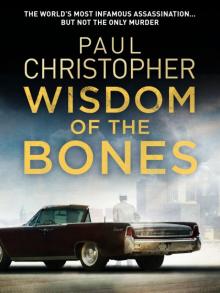 Wisdom of the Bones
Wisdom of the Bones The House of Special Purpose
The House of Special Purpose The Second Assassin
The Second Assassin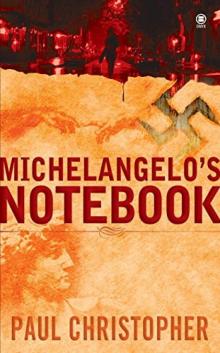 Michelangelo's Notebook
Michelangelo's Notebook Templar Legion
Templar Legion The Sword of the Templars t-1
The Sword of the Templars t-1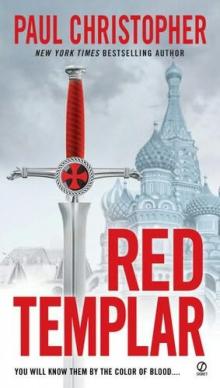 Red Templar
Red Templar The Aztec Heresy
The Aztec Heresy The Templar Legion
The Templar Legion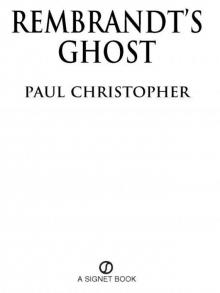 Rembrandt's Ghost
Rembrandt's Ghost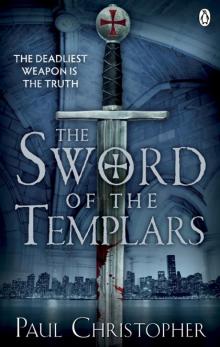 Sword of the Templars
Sword of the Templars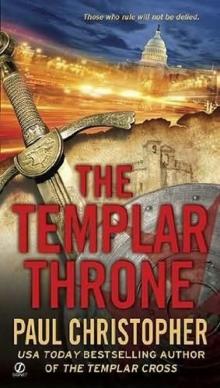 The Templar throne t-3
The Templar throne t-3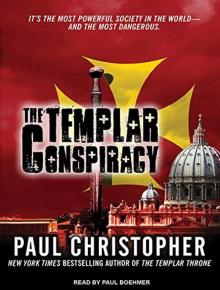 The Templar Conspiracy
The Templar Conspiracy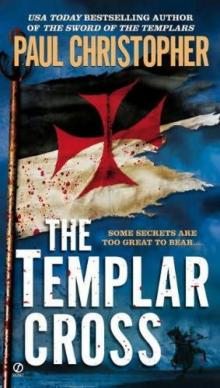 The Templar Cross t-2
The Templar Cross t-2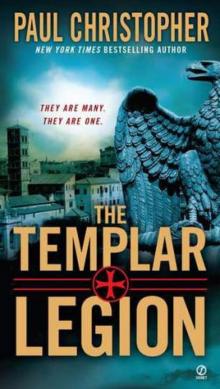 The Templar Legion t-5
The Templar Legion t-5 The Lucifer Gospel
The Lucifer Gospel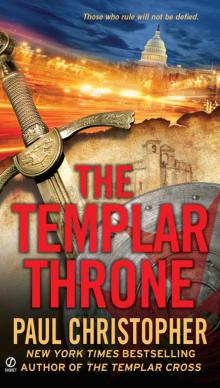 Templar Throne
Templar Throne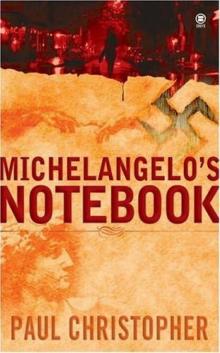 Michelangelo_s Notebook fr-1
Michelangelo_s Notebook fr-1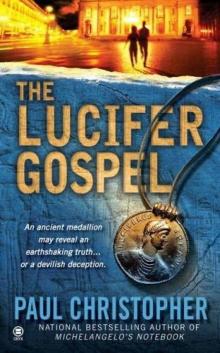 The Lucifer Gospel fr-2
The Lucifer Gospel fr-2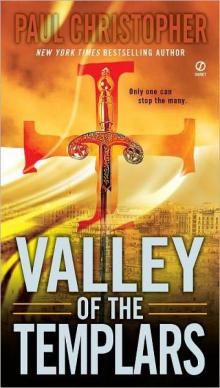 Valley of the Templars ts-7
Valley of the Templars ts-7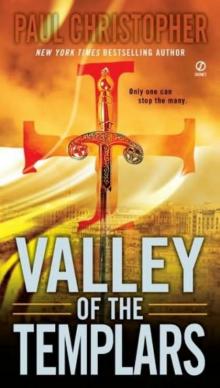 Valley of the Templars
Valley of the Templars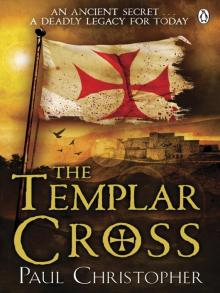 Templar Cross
Templar Cross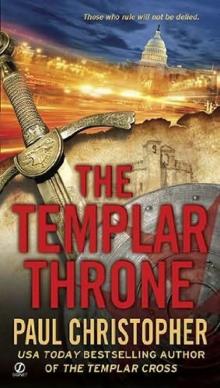 The Templar Throne
The Templar Throne The Templar Cross
The Templar Cross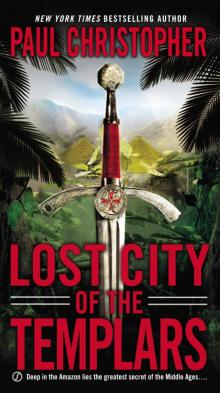 Lost City of the Templars
Lost City of the Templars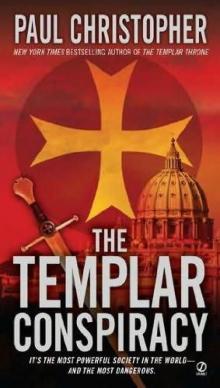 The Templar conspiracy t-4
The Templar conspiracy t-4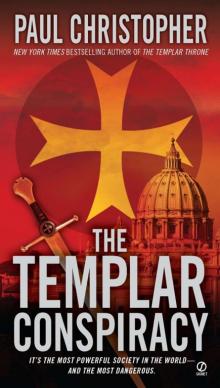 Templar Conspiracy
Templar Conspiracy